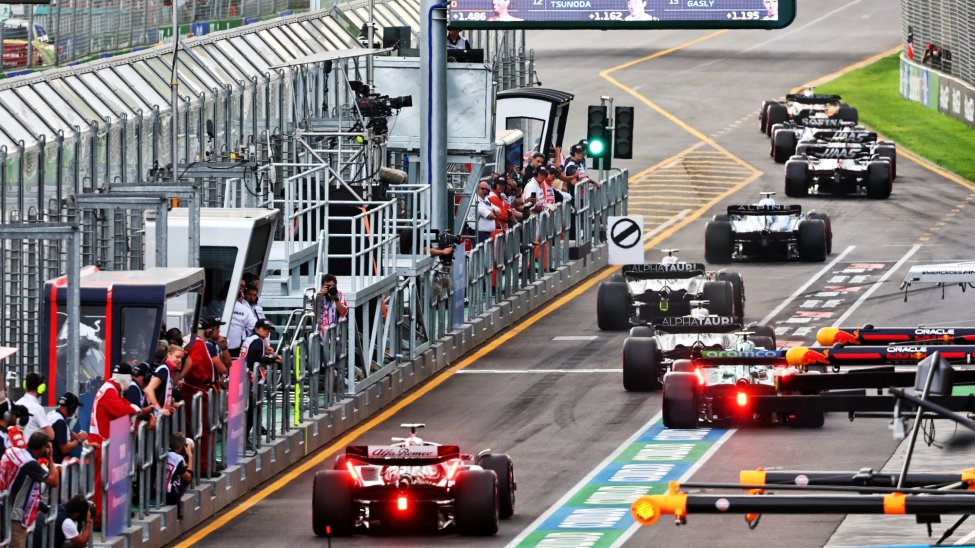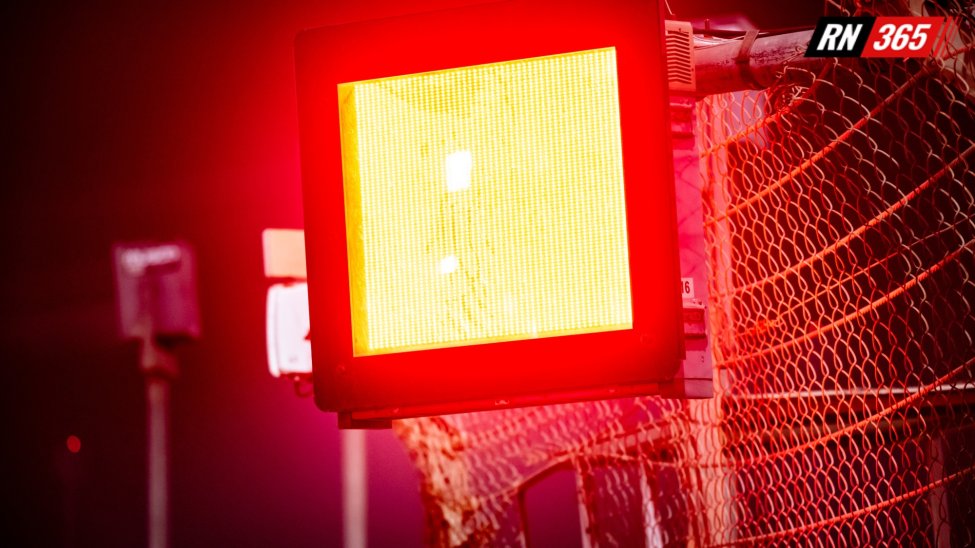All the key F1 rules for the 2022 season
Like all sports, Formula 1 adheres to a strict set of rules which define everything from the limits of the tracks during races to the engineering that can go into a car.
This rule set has been built on the back of numerous technical and safety improvements in the sport over the decades, and the regulations can prove complex and lengthy for newcomers and long-term followers of the sport alike.
Here, RacingNews365.com provides a complete overview of the Formula 1 rules as they stand for the 2022 season.
F1 races across an international calendar, with 23 Grands Prix in place for the 2022 season, which will run from March to November.
A total of 10 teams have entered for the coming year, each of which will field two drivers, meaning that a total of 20 will compete for the Drivers' Championship.
Over the course of a race, 300 kilometres plus one extra lap must be completed for it to be considered official, with exceptions made for special circumstances such as adverse weather conditions or serious accidents which require management of the track.
A race which is over 75 percent complete at the time of such an incident can be considered complete by race management, with all drivers receiving full points equivalent to their position when the race was halted.
Such decisions are in the hands of FIA race management as well as officials representing the particular track and race stewards.
F1 World Championships and points system
Formula 1 is a competition that contains two distinctive and related championships – the Drivers' trophy, for the individual driver who accumulates the most points over a season, and the Constructors' title, for the manufacturer or team whose drivers cumulatively score the most in a year.
Drivers only score points if they finish in the top 10 of any race, with a progressive scoring system from first to 10th. From the 2020 season, the driver who clocks the fastest lap of the race also nets one additional bonus point, but only if they also finish within the top 10.
The breakdown of the current F1 points system is shown below:
Points per position in F1 races
| Position | Championship points |
|---|---|
| 1st | 25 |
| 2nd | 18 |
| 3rd | 15 |
| 4th | 12 |
| 5th | 10 |
| 6th | 8 |
| 7th | 6 |
| 8th | 4 |
| 9th | 2 |
| 10th | 1 |
| Fastest Lap (while in top 10) | 1 bonus point |
What is the format of an F1 weekend?
Each Grand Prix takes place over a full three-day weekend, with the sessions split between two free practice runs on Friday, a final practice on Saturday morning, a three-part qualifying in the afternoon to determine the starting grid, and finally the race on Sunday.
Practice:
The practice sessions on the Friday and Saturday morning of the Grand Prix weekends allow teams and drivers to get a feel for the track, their car and the conditions ahead of the qualifying sessions.
The first free practice session typically begins late morning on a Friday, with teams given one hour to find their feet at the track, followed by a second session of the same length in the afternoon. For Saturday morning practice, the teams have another hour to get ready for the qualifying session later that afternoon.
Qualifying:
The Saturday qualifying session is split between three separate knockout phases in which the slowest five drivers are steadily eliminated. The positions at the end of the final session determine the starting grid for the Sunday race.
Q1 - All 20 drivers begin this session, during which they have 18 minutes to get laps in, with the slowest five drivers dropping out and their grid spots for Sunday locked in.
Q2 - The remaining 15 drivers move into the second part of the qualifying battle, with just 15 minutes now on the clock to set the fastest lap possible and the slowest five drivers again being knocked out at the end of the session.
Q3 - In this final 12-minute sprint, the remaining 10 drivers fight it out for the fastest time and pole position.
Race:
Formula 1 races are typically held on a Sunday afternoon for those which take place in Europe, with some differences for races on other continents.
Notably, races in Bahrain and Abu Dhabi begin in the early evening, while the Singapore city track has hosted night racing under floodlights with a 20:10 local time start.
The race is held across the number of laps of the particular track equivalent to 300km, plus one extra lap, with some exceptions for circuits such as Monaco, where only 260km are raced due to the slow nature of the circuit.
A Grand Prix has a time limit of two hours, with the clock stopped during emergency situations such as when the track is unsafe due to weather conditions or crashes. From the 2021 season, the race must be completed within three hours of the start including stoppages, a revision down from four hours in previous years.
What about F1's Sprint weekends?
After successful trials in 2021, there will be three more Sprint weekends in 2022, at Imola, the Red Bull Ring and Interlagos.
The schedule will be different for these Grands Prix, with the traditional qualifying session taking place on Friday evening and the 'Sprint' race on Saturday afternoon.
Qualifying determines the grid for the Sprint, with the result of the Sprint (a 100km race lasting around 25-30 minutes) confirming the grid for Sunday's Grand Prix.
In a change to the system for 2022, the driver who sets the fastest time in qualifying will now be recognised as the pole-sitter, with this previously going to the winner of the Sprint.
Another change will see the top eight finishers in the Sprint score points, ranging from eight to one – compared to only the top three last season.
F1 pit-stops and tyre rules
F1 tyres are supplied exclusively by Italian manufacturer Pirelli, which offer a range of five slick compounds, with only three taken to any given Grand Prix weekend, in addition to Intermediate and Wet tyres for damp conditions.
The dry tyre sets run from five grades of harder to softer rubber, which reflects the durability of that particular tyre compound. Harder tyres allow drivers to stay out on track for longer periods, but provide less grip and deliver slower lap times, while the soft tyres will provide more grip to the asphalt but wear out quickly.
The tyres are identifiable to viewers through their distinctive markings, with each compound given its own colour marking on the outer rim of the tyre:
Hard: White
Medium: Yellow
Soft: Red
Intermediate: Green
Wet: Blue
Current F1 regulations require teams to use at least two different tyre compounds during a race, which forces them to make a minimum of one pit-stop. The car must carry a uniform set of tyres at all times, with no allowances for mixed sets, for example Softs on the front and Hard tyres on the rear of the car.
Teams have been barred from refuelling cars during a race since the 2010 season, and so drivers start with a heavy car as they need to carry sufficient fuel and manage it correctly to last the entirety of the Grand Prix.
What do F1's flags mean?
To communicate different situations on track to drivers, officials use a flag system to warn of certain hazards on the circuit as well as to provide drivers with information about their car or others'.
Red = Race is halted.
Yellow = Hazard on track, speed and overtaking restricted.
Yellow/Red stripes = Oil or other liquid on track, caution.
Green = Hazard cleared, resume racing.
Blue = Indicates to a lapped car that they must let faster cars behind pass.
White = Slow-moving car ahead.
Black = Driver disqualified, return to pits, contains driver number.
White/Black = Driver warning for unsportsmanlike behaviour, with number.
Chequered flag= End of the race.
SC = Safety Car deployed. A Virtual Safety Car, where drivers must maintain a required gap to the car in front, are also used for more minor incidents.
What penalties can F1 drivers be given?
Failure to heed the above flags, and a number of other infringements, can result in drivers being handed a penalty by race officials. These differ depending on the severity of the infraction.
Some of the more well-known punishments are the drive-through penalty, which forces drivers to pass through the pit lane at the speed limit, which usually sits at 80km/h, and the more severe stop-go penalty, which stops drivers outside their own garages for 10 seconds.
In extreme cases, drivers can be disqualified from races, and this decision is in the hands of the stewards and race officials.
F1's complex technical rules
F1 also has numerous Technical Regulations, which regulate how many versions of certain components teams can use during the season.
Drivers are only allowed to use a maximum of three engines throughout the course of the year and are also limited in the number of hybrid components. Meanwhile, there is a similar three-component limit on gearboxes, which have now been separated out.
Adding to the technical challenge, teams are given a limited chance to test their cars before the season begins. Just six test days were scheduled for 2022 and the sport's rules reset, with a shakedown in Barcelona and an official pre-season session in Bahrain.
Testing for drivers is permitted outside of these narrow windows, but only in cars that are at least two years old.
Don't miss out on any of the Formula 1 action thanks to this handy 2026 F1 calendar that can be easily loaded into your smartphone or PC.
Download the calender

